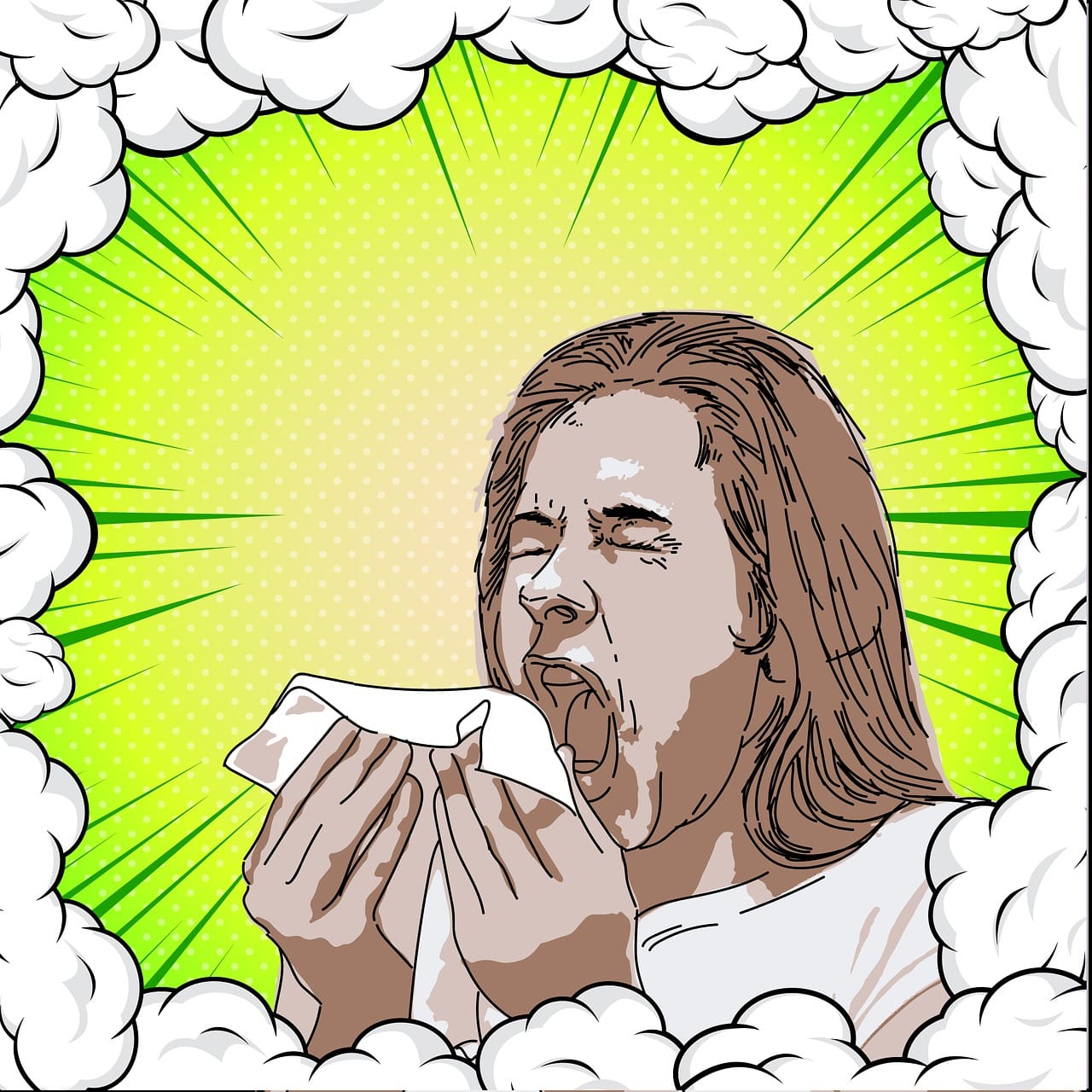Table of Contents
Scarlet Davis
particle.scitech.org.au
Lover of all thing’s science and theatre, Scarlet combines her two passions across her freelance work. From science writing to script writing, they enjoy putting pen to paper to share their enthusiasm with the world. Also, a trained performer and theatre maker, you can find Scarlet working in the theatres at Scitech or making work for Undercurrent Theatre Company.
If you suffer from hay fever or know someone who does, the struggle is real. Non-stop sneezing, a runny nose, itchy, watery eyes – it’s a miserable condition. But what is hay fever? Why do some of us experience an occasional a-choo while others suffer through a season-long malaise once spring hits? Particle unpacks hay fever.

What Is Hay Fever?
Despite its name, hay fever isn’t caused by hay and doesn’t cause a fever. Allergic rhinitis is an allergic reaction to inhalant allergens. That’s the stuff we breathe in!
The reaction occurs in the inner lining of the nose, causing those literally irritating symptoms of sneezing, red, watery eyes and a runny or blocked nose.
In the 19th century, this allergic reaction was attributed to freshly cut hay, but they soon discovered that hay was not the culprit.
Nowadays, we often attribute hay fever to the seasonal pollens that cause some of us grief. But actually, hay fever can be triggered by a wide variety of allergens, such as dust, animal fur, fungal spores and air pollutants. And for some unlucky souls it can occur year-round.
Why Me?
You’re not alone. Hay fever affects one in five Australians. It’s the most common allergic disorder in Australia, according to HealthyWA.
So why do 20% of us have an immune system that treats pollen as if it were a virus? It boils down to genetics and the environment.
Like many of our character traits, you can largely thank Mum and Dad. But they’re not the only ones to blame. Sensitisation to certain allergens, including pollen, can occur through exposure at a young age. So if you grew up surrounded by pollen, you’re likely to feel the effects of it. Some people outgrow these sensitivities, but they linger into adulthood for many.
Snot Funny
Many blame wattle’s fluffy golden blooms for their sneezing fits but that’s incorrect. Insect-pollinated Acacia species have heavy pollen that tends to fall straight to the ground, posing little airborne risk.
Wind-pollinated plants, such as trees, grasses and flowering weeds are the main culprits.
Australian native grasses tend to be far less allergenic than introduced northern hemisphere species. Trees such as the silver birch, olive and English oak start pollination at the end of winter and beginning of spring. This aligns with the wind starting to pick up, causing the perfect conditions for high pollen counts.
‘Tis the Season
In Australia, the prevalence of hay fever in adults is rising. Our pollen season may also be getting longer, leading to increasing annual pollen counts.
This could be due to climate change. Scientists across the northern hemisphere have shown that hay fever and pollen counts are rising as temperatures increase. In Australia, we’re starting to investigate these effects.
There’s a strong association between an increase in pollen and higher maximum temperatures and rising C02 levels. These factors could also be a factor to increasing the distribution of some high pollen-producing grasses.
There is also concern that some of these high pollinating grasses will spread into new areas, bringing hay fever along with them.
Hay, I’ve Got the Fever
Pollen doesn’t like dry weather. It relies on grasses and trees to flower each year, and without enough water, there are fewer flowers over a shorter period.
In Australia, especially here in WA, we’re prone to dry weather and drought, which can reduce pollen production. But the changing weather patterns we’ve experienced in recent years, including big rain events, have the potential to increase pollen production.
This year, Perth had a very wet winter, causing lots of weeds and wind-pollinated trees to flourish. As the weather starts to warm up, the spring and summer winds start to blow and bring on hay fever.
You Might Achoose to Stay Indoors
Here are some tips to minimise hay fever symptoms this summer.
Check The Weather Channel and stay inside on high pollen count days. Give your indoor plant collection some fresh air, especially if they’re flowering. And invest in an air purifier to keep your home a pollen free zone.
If you’re keen to enjoy the outdoors despite hay-feverish conditions, head to your local pharmacy. Antihistamines and nasal sprays can provide some relief.
If you’re really suffering, see your GP. They can prescribe medications and provide patient education, giving you the best chance to beat hay fever at its own game.
This article was originally published on Particle. Read the original article.









